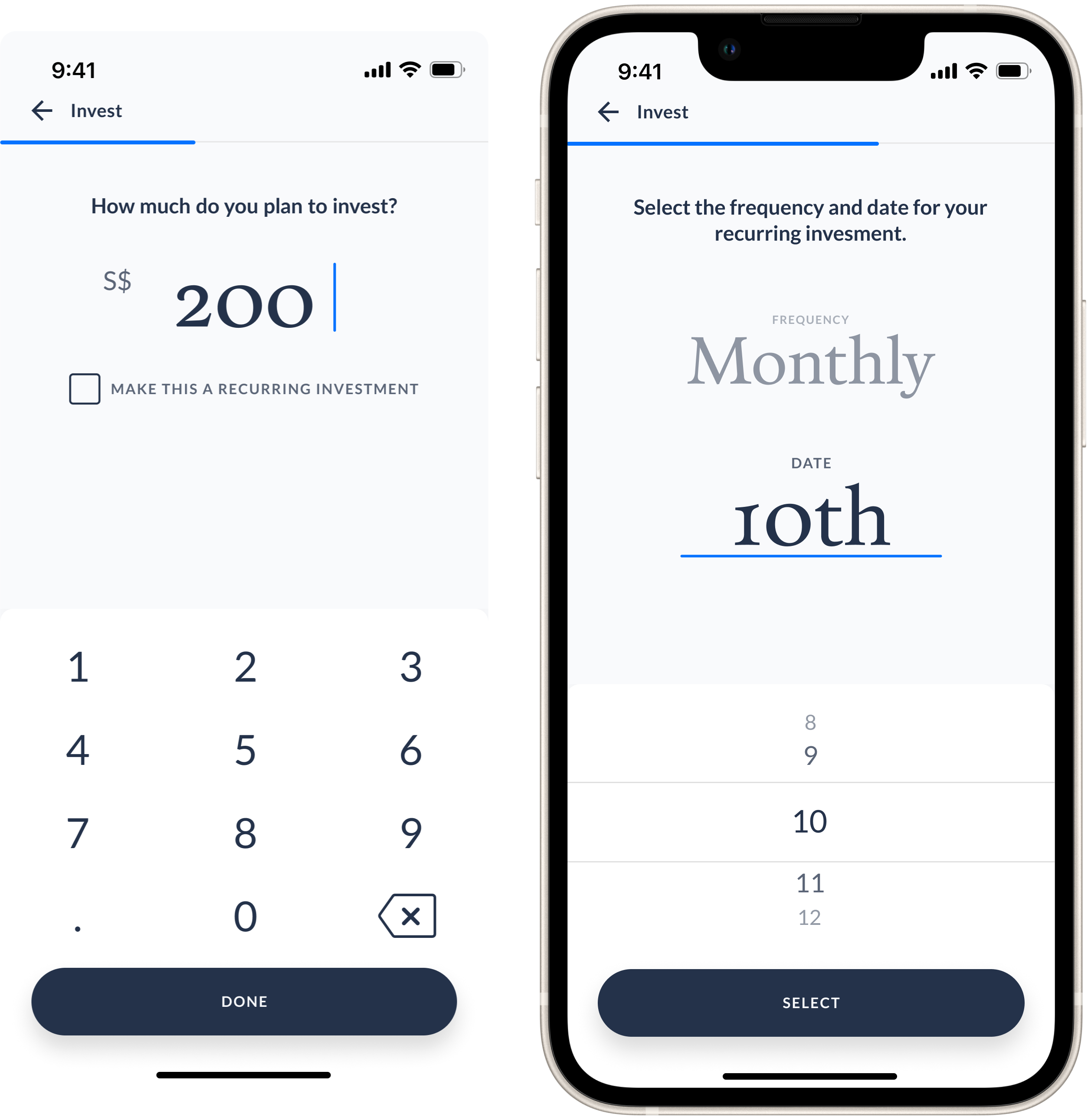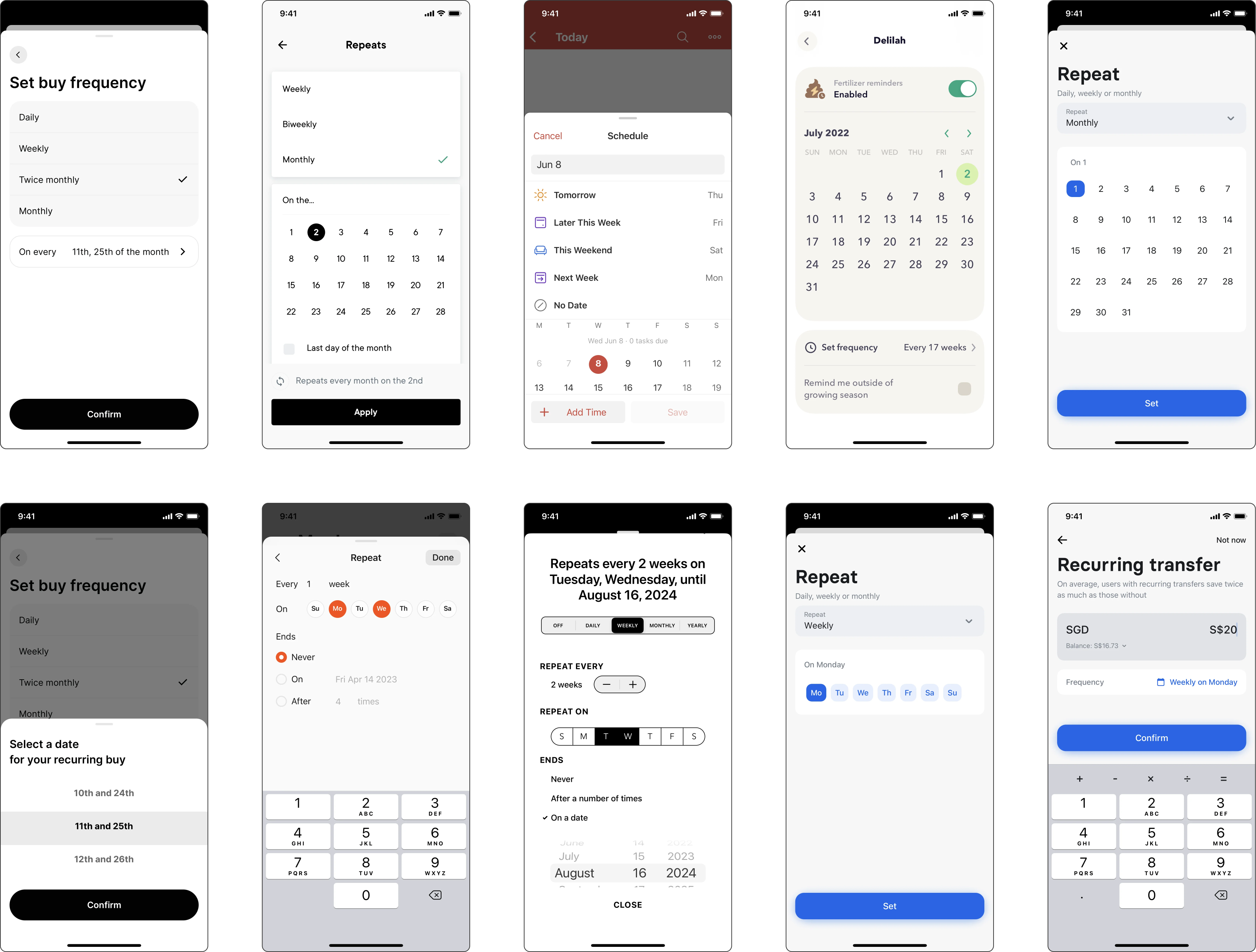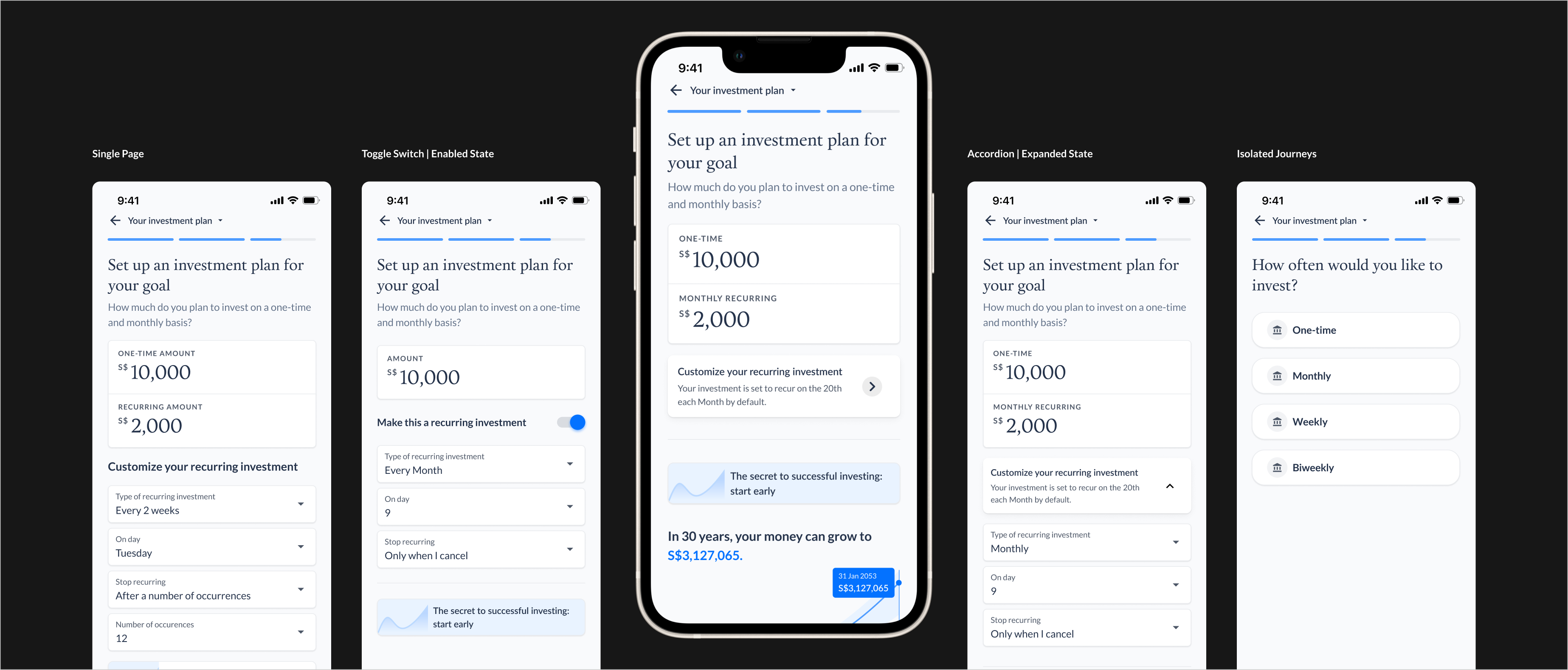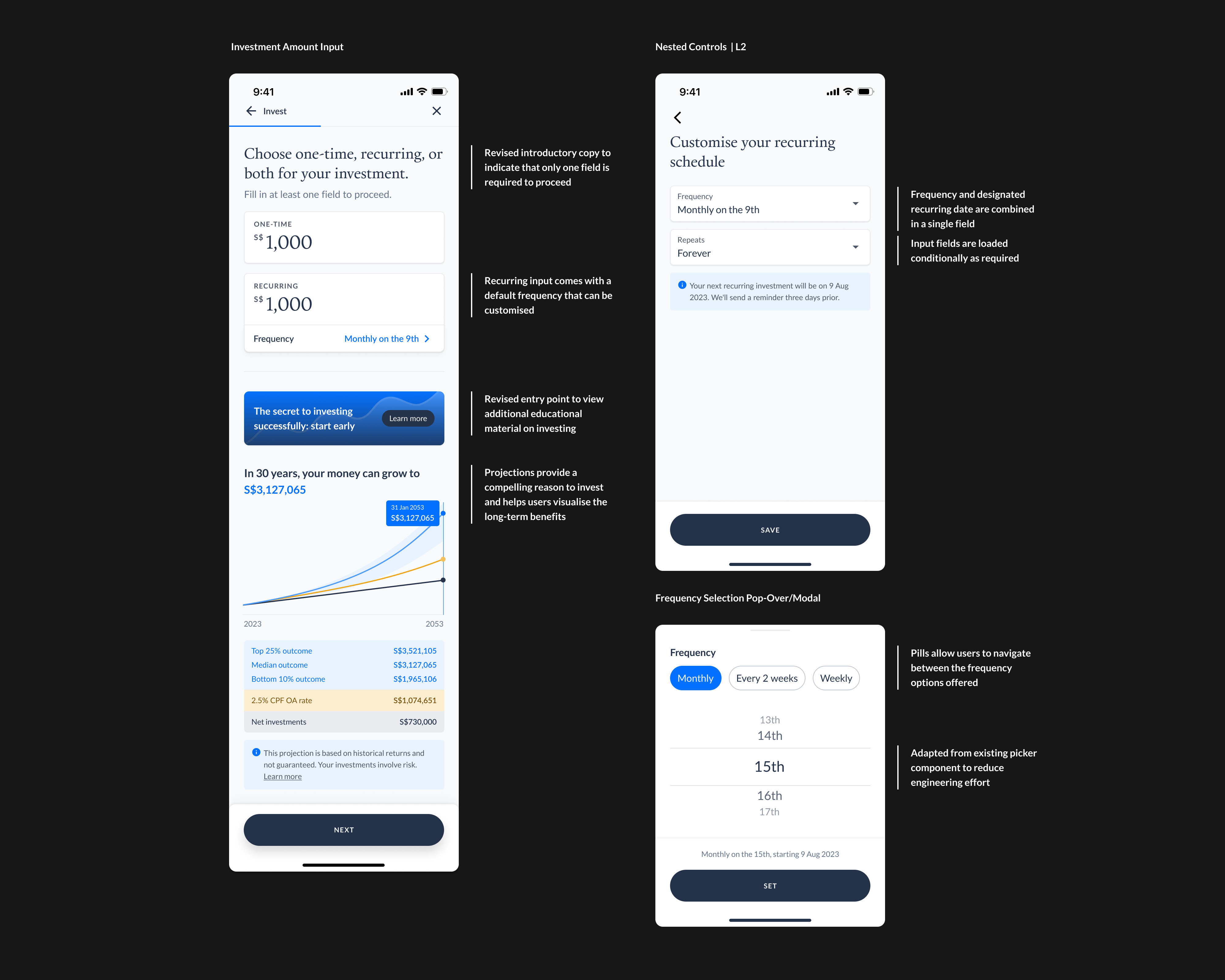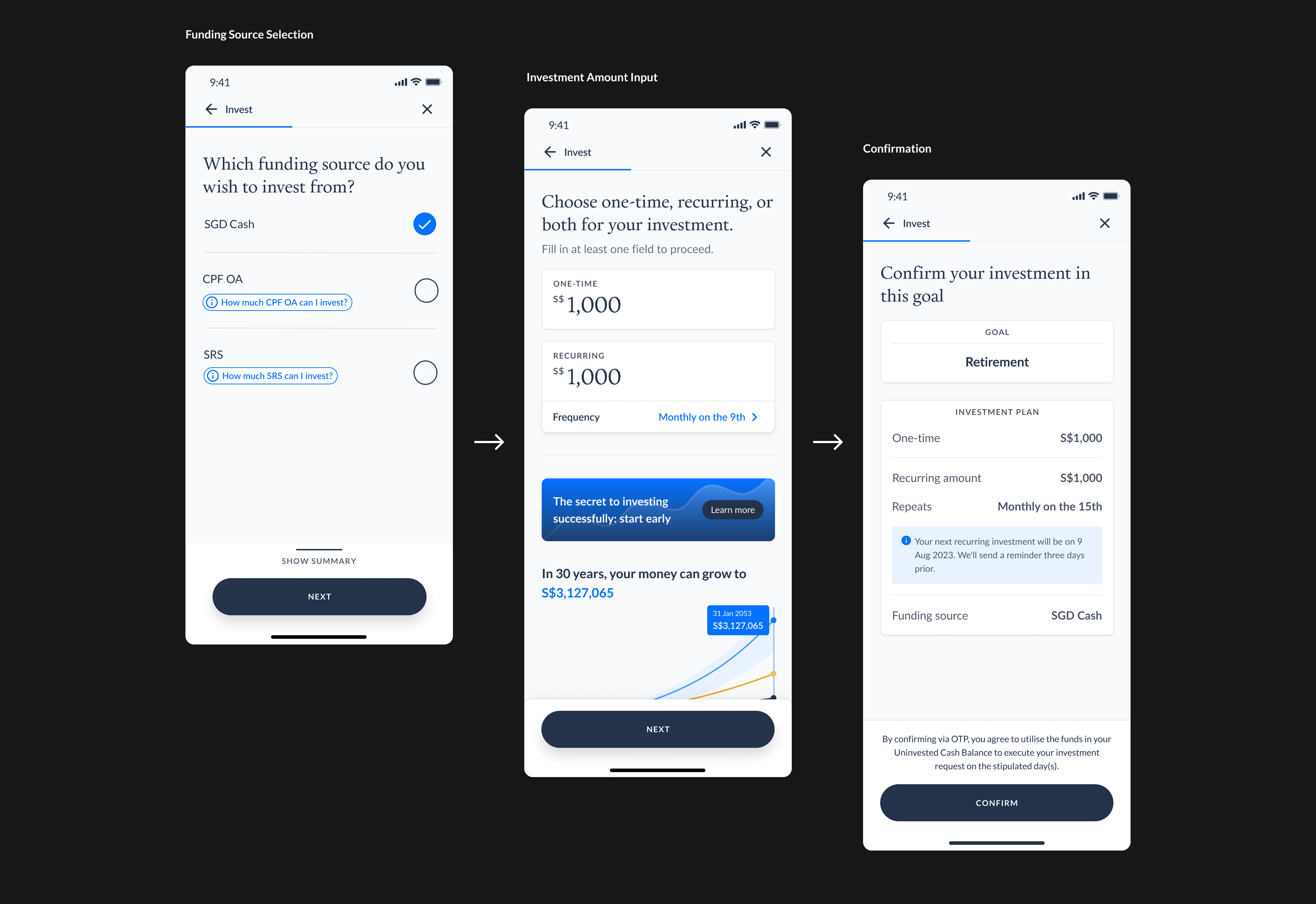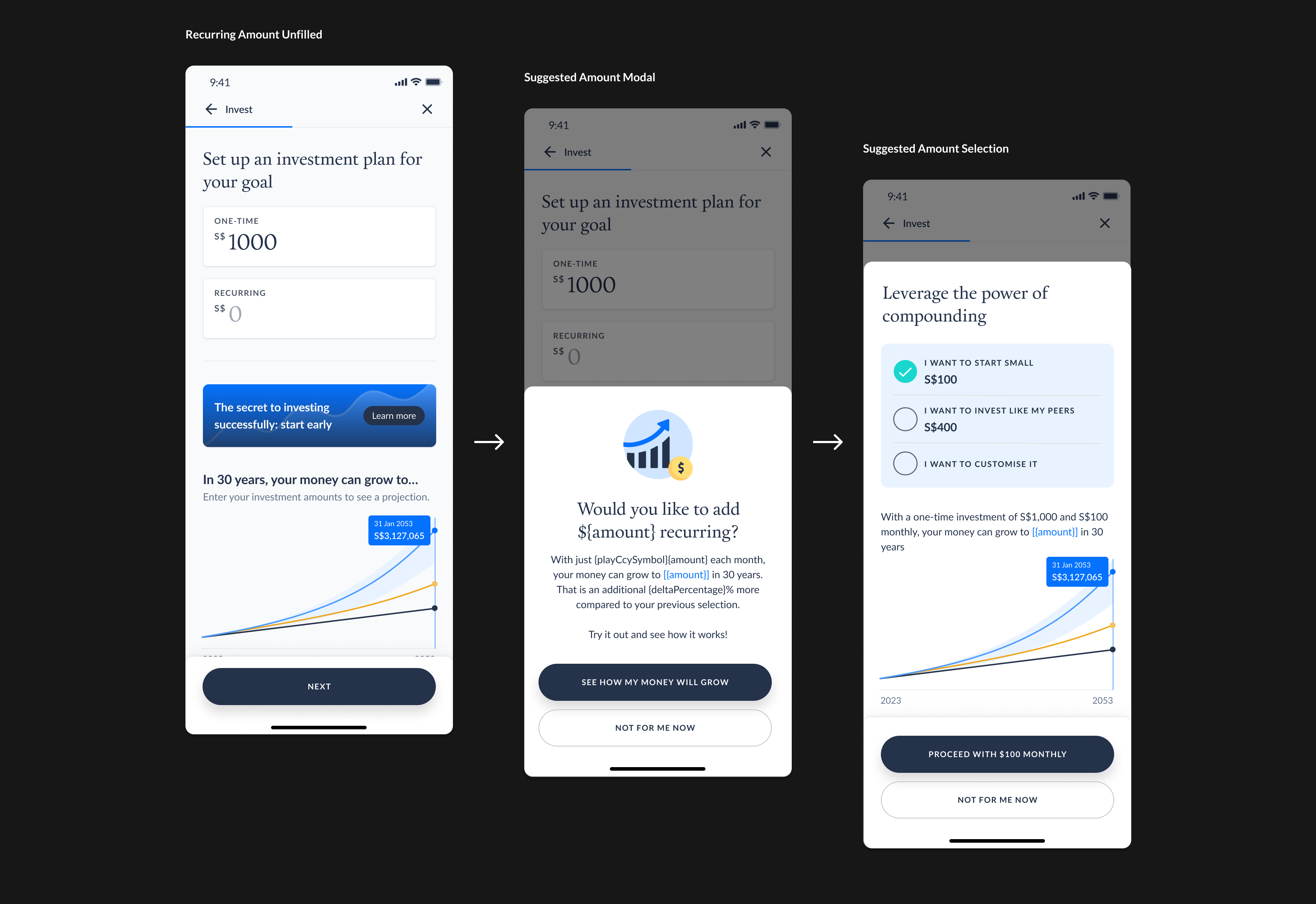Context
Context
Why build a recurring investment feature at all?
As a wealth management platform with a focus on long-term investing, the inclusion of recurring
investment features is crucial in assisting clients in making regular contributions towards their
financial goals. This functionality also benefits users by allowing them to navigate short-term
fluctuations and concentrate on building wealth through sustainable growth.

